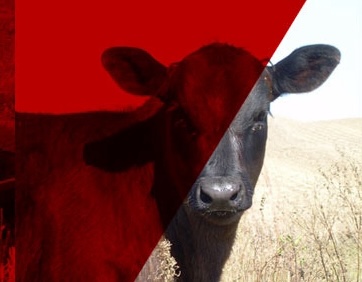Cover crop inter-seeding refers to the practice of planting a forage crop in grain crop rows. This is not a new practice, but it is one that is gaining attention as fall and winter cover. For cattle producers with access to irrigated cropland, cover crop inter-seeding may offer fall and winter grazing options, particularly during years when drought is expected.

Cattle producers, with access to irrigated cropland, who have the option of modifying corn planting, should consider cover crop inter-seeding after planting corn. The resulting cover crops will be high in quality and quantity; therefore, growing cattle, weaned calves or stockers, are the most appropriate to graze on these crops.
A few items to keep in mind when considering cover crop inter-seeding:
- Because the corn canopy blocks the sun from reaching the ground, rows must be set wider apart than usual. Generally, 60-inch rows are sufficiently wide to permit normal cover crop growth. This will obviously influence corn yield, which must be considered in the financial analysis.
- Harvest and grazing timing drive decisions to select corn maturity and use for the crop. Generally, to maximize grazing time, early maturity hybrids are selected, which are harvested as earlage or high-moisture corn.
- The type and timing of chemicals used for prevention of pests or fungus in corn is critical to prevent chemical residues in meat or organ meat. Similarly, corn herbicide application must be pre-emergence of the cover crop.
- Cover crops are generally planted when corn is at the 3- to 5-leaf stage using a high-clearance drill or aerially.
- Forage species to include in the cover crop mix depend less on the energy content of the resulting mix than on the forage yield and the capacity to manage cattle grazing it. It is popular to include brassica species in these mixes to increase yield; yet tubers from this and other species such as sugar beets may choke cattle if they attempt to eat them whole.
- Whether high-yielding forage species are included or not, managing resulting forage yield is important to ensure extended grazing periods after harvest. In northern latitudes, earlage harvest occurs in mid-October; thus, little forage growth is expected after November 1. For this reason, setting up the field for strip grazing is recommended.
In a recent study with commercial dryland corn fields, the yield difference between planting corn in 30-inch or 60-inch rows was 33 bushels (bu)/acre (corn in 30-inch rows yielded 185 bu/acre). At current corn grain prices ($4.50/bu), inter-seeded cover crops in 60-inch rows would result in a reduction in revenue of roughly $150/acre. At current calf prices, $3.50/lb, cover crop grazing gains of 40 lb per acre would offset this reduction in revenue.
In that study, inter-seeding cover crops in 60-inch-wide rows resulted in nearly 900 lb cover crop dry matter per acre. Assuming a modest conversion of cover crop to beef gain of 10 lb to 1 lb results in 90 lb gain per acre. This is twice the amount of gain needed to offset lower grain yields. Note that these calculations do not consider the differential in costs resulting from less seed corn and cost of cover crop seed.
Should this basic review lead the reader to consider inter-seeding cover crops in irrigated corn fields, enlisting the help of crop and nutrition consultants is recommended.
Article by Alfredo DiCostanzo and Connor Biehler, Nebraska Extension, Livestock System Educators.

